UX Case Study: Cadillac Eterna – Concept Car for year 2040
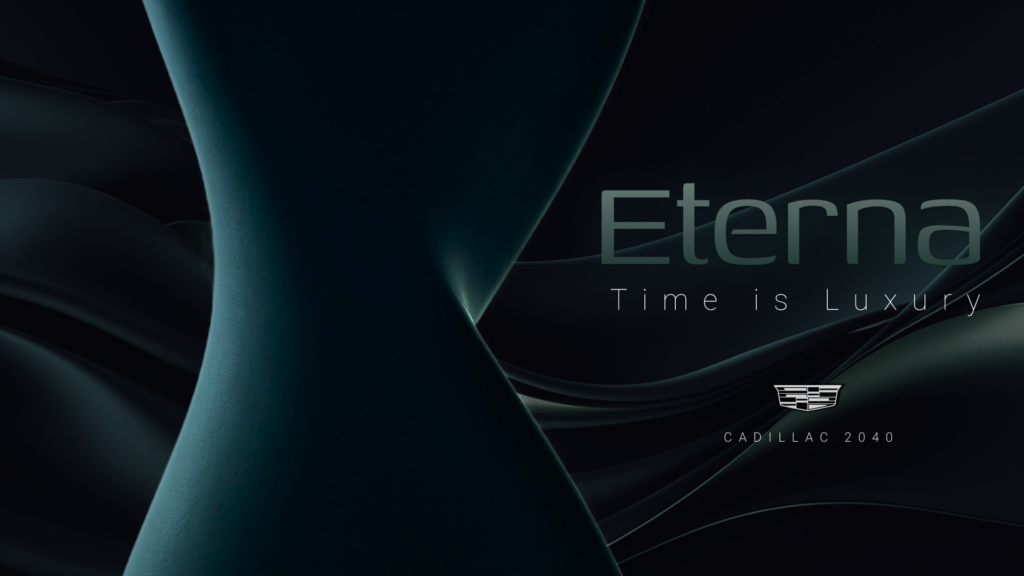
Introduction
This project was part of a four-week externship with Cadillac, where we were challenged to design a concept car and complementary products for 2040. The target? A $300,000 luxury vehicle that pushes the boundaries of innovation and exclusivity. But beyond luxury, we wanted to redefine what it means to own and experience time.
Luxury isn’t just about expensive materials anymore—it’s about time. True luxury means having the freedom to choose how we spend our time. That’s the idea we wanted to bring to life with the Cadillac Eterna 2040. This wasn’t just about building a car; it was about crafting an experience where technology makes life smoother, more efficient, and ultimately, more enjoyable.
Understanding the Market
Who Can Afford a $300,000 Car Today?

Let’s be real—not many people can. According to the IRS, only about 2% of the U.S. population earns $250K+ per year. The typical buyer for a car like this? They’re making anywhere from $750K to $5M+ annually, with a net worth over $5M. That means they have a monthly disposable income between $40K and $200K—plenty of room for a high-end luxury vehicle.
Benchmarking Luxury Vehicles
Before we dove into the design, we needed to understand what defines ultra-luxury today.
Tom Brady’s Custom Cadillac Escalade ($300K)
- 20” longer, 5” taller
- Reclining rear seats, burl walnut tables
- 32” TV, mobile WiFi—basically a private jet on wheels
Faraday Future FF 91 Electric SUV ($309K)
- 1050-hp performance
- Five years in development
Both of these vehicles reinforced a key insight: luxury isn’t just about material things—it’s about time.
What does real luxury look like?
What does real luxury look like?
- Spending less time on tasks and more time on what actually matters.
- Having the freedom to control your own schedule.
That became our north star for this project—creating a vehicle that gives people back their time.
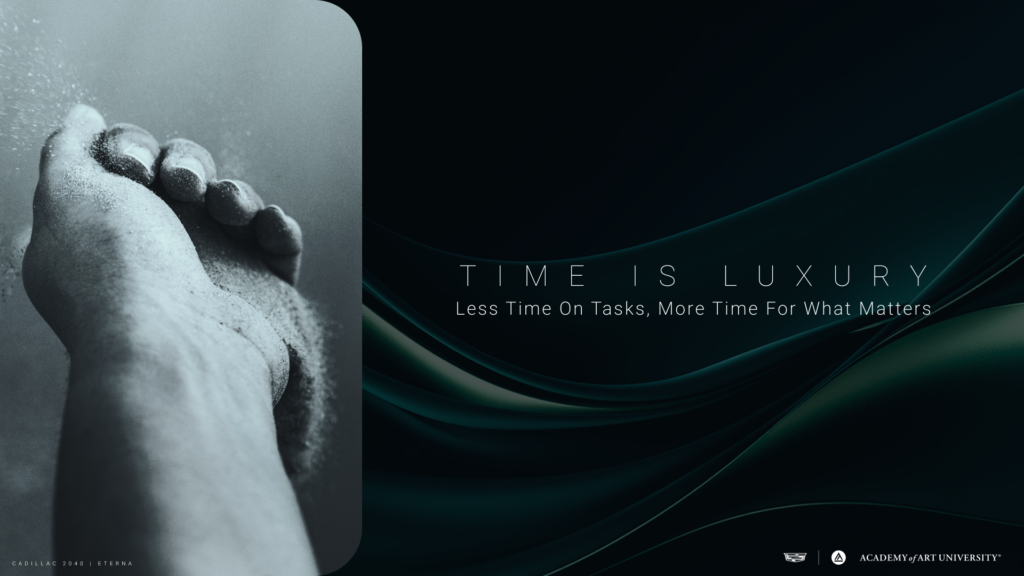
Designing for the Future of Cadillac
Starting with the Efficient Individual
At first, we focused on a persona who values efficiency above all else. We identified the pain points and hobbies.

Working with industrial product designers, we came up with a few early ideas:
- Golf Caddy – A smart, integrated golfing solution.
- Smart Wardrobe – A connected wardrobe for effortless outfit selection.
- Kayak – A luxury recreational product infused with Cadillac’s design DNA.
I didn’t want to stop at just brainstorming. To push the team further, I used AI tools to create concept videos and futuristic renderings. This helped us set a high bar and visualize what we needed to build.
Finding the Right Fit with Team Eterna
As we got deeper into the project, I realized we needed a more holistic approach. So, I jumped in to collaborate with the transportation teams working on the Cadillac Eterna 2024. We connected with two teams, but Team Eterna stood out—they were proactive and aligned with our vision. So, we went all in with them.
To make sure our design fit seamlessly into their vision, we tweaked our persona and refined our solutions. This was about more than just designing cool products—we wanted everything to tell a cohesive story. transcends traditional luxury.

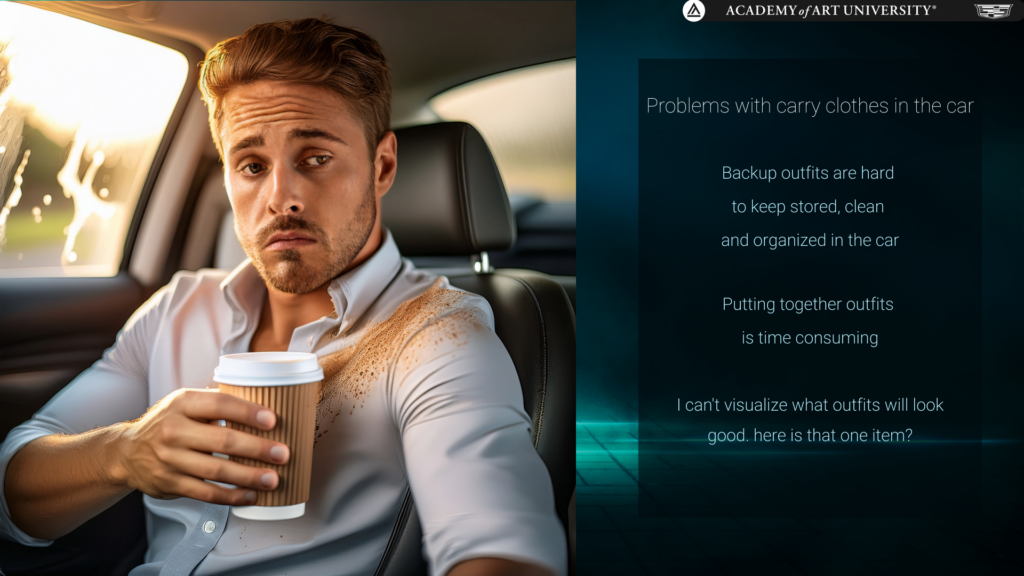
Client Feedback & Refinements
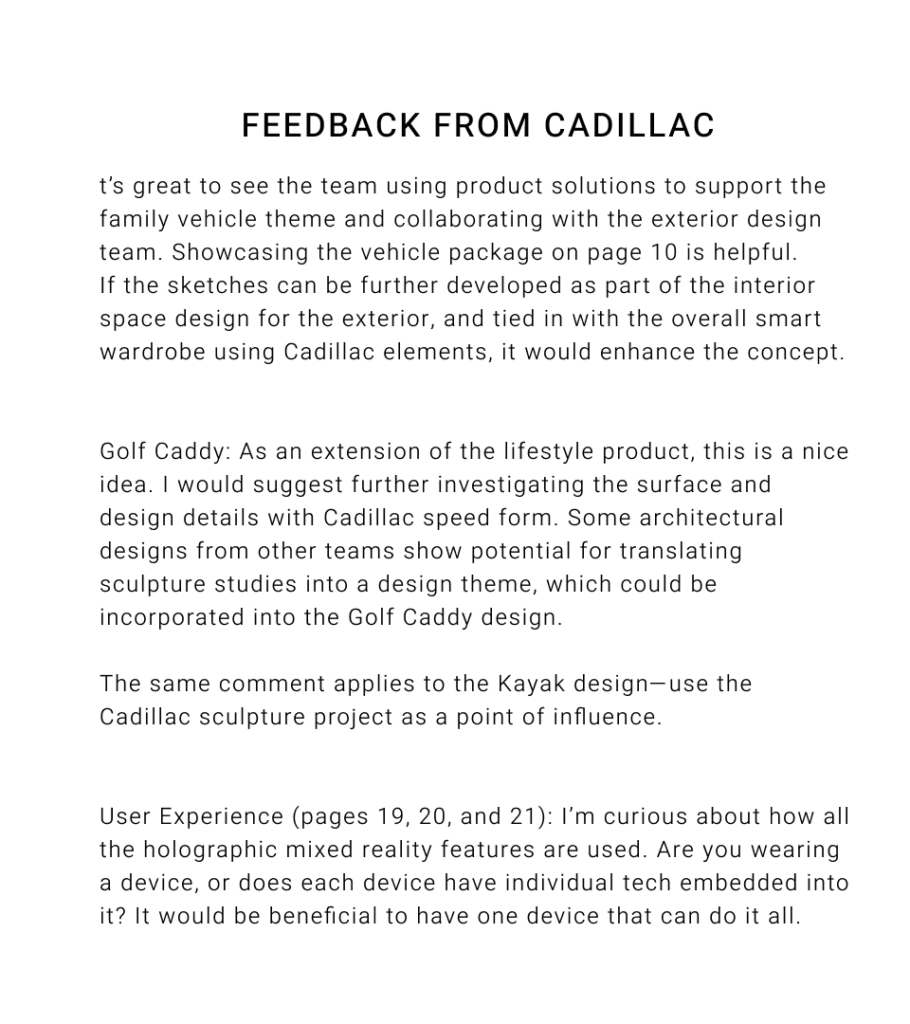
What We Heard
- The team loved how our product solutions supported the family vehicle theme.
- They wanted deeper integration between the interior and exterior design.
- The Golf Caddy and Kayak needed to align more with Cadillac’s sculptural design aesthetics.
- There were questions about how the mixed reality features would actually work.
User Experience Design: Mixed Reality Interface
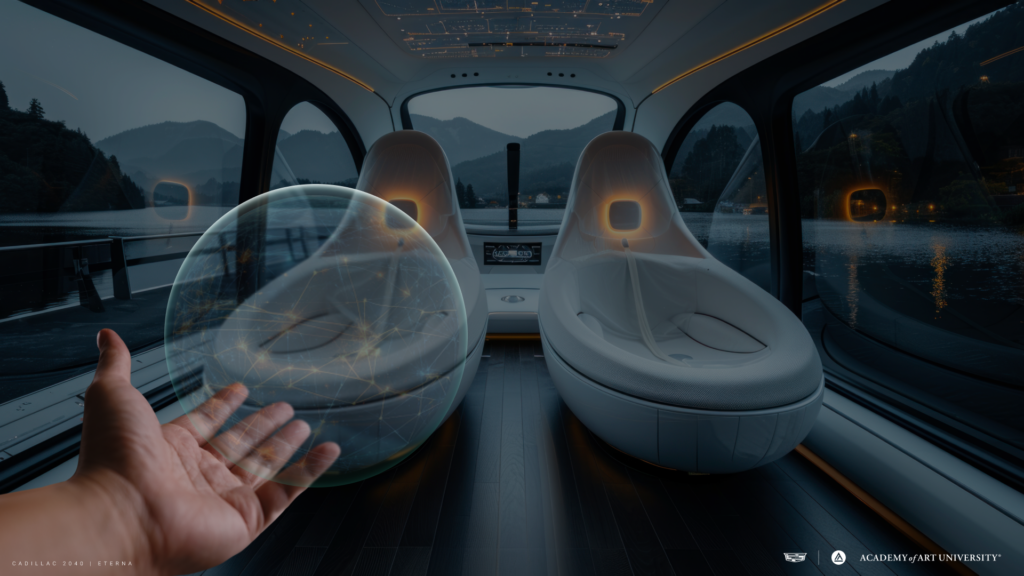
The Big Question: One Device or a Distributed System?
At first, we started with client’s feedback to create one smart device to control everything? But here’s the problem: a single device would be bulky, power-hungry, and inefficient. Instead, we decided to go with a distributed system for a more seamless experience.
The Solution: Neural-Integrated BCI System
We landed on a sensory system made up of a lens, a ring, and an ear hook. Each piece plays a role in creating an intuitive mixed-reality interface.
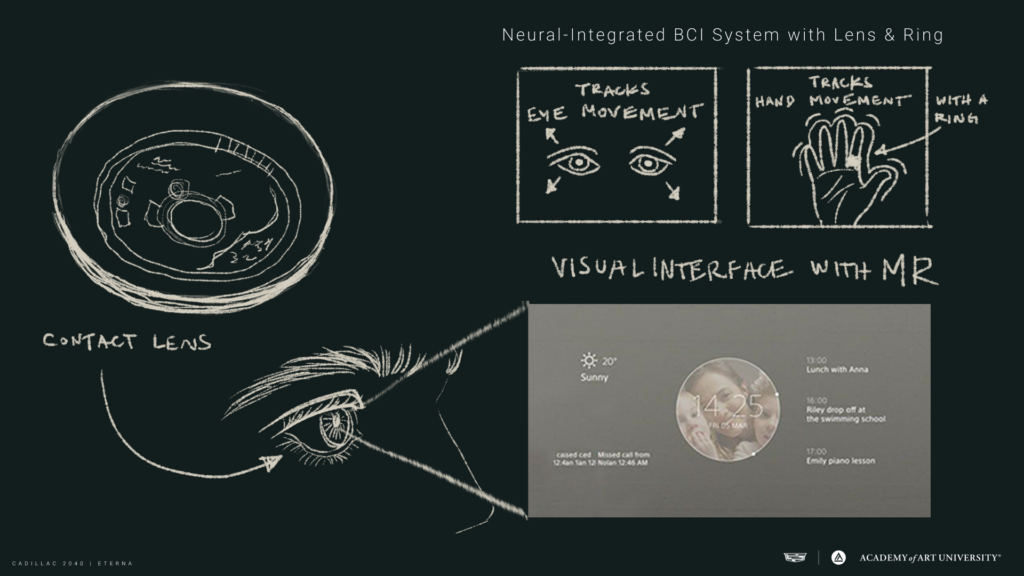
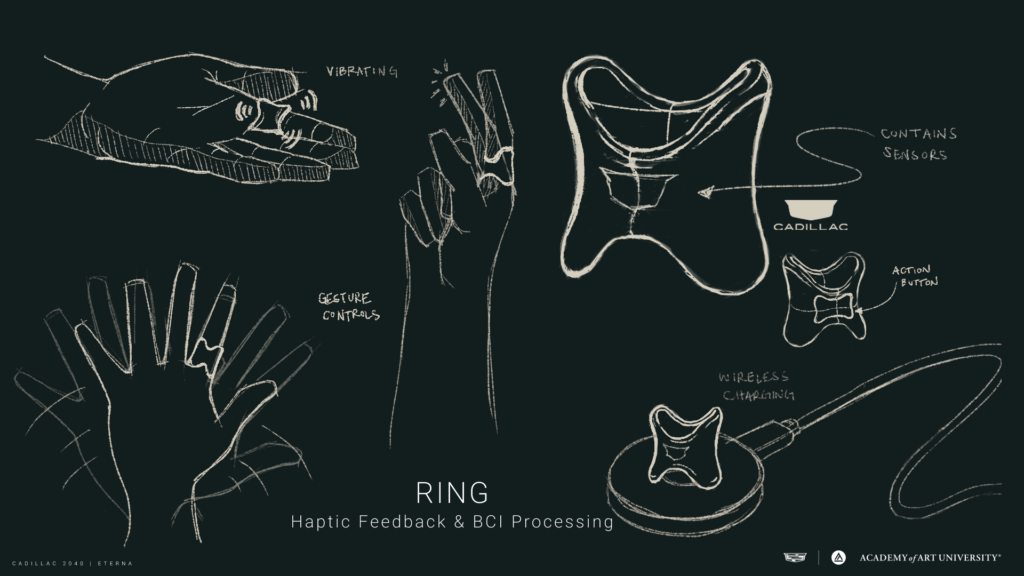

Contact Lens with Neural-Integrated Visual Interface 👁️
- Projects holographic/mixed reality visuals directly onto the eye.
- Tracks eye movement & brain signals for hands-free control.
- Processes visual data on-device with AI-driven enhancements.
Ring – Haptic Feedback & BCI Processing 💍
- Reads neural & muscle signals for intent-based interactions.
- Provides realistic haptic feedback through nerve stimulation.
- Acts as a controller for the mixed-reality experience.
Why We Ditched the Central Hub (No More Pin)
- Lighter, more wearable products.
- Faster neural interaction.
- Lower power consumption.
User Interaction Ideation
To make sure this all felt natural, we developed different interaction models, exploring how users would seamlessly control their vehicle using these devices. The goal? An effortless, intuitive experience that makes interacting with Cadillac Eterna feel second nature.
Refined the Interfaces and created detailed flows
Conclusion & Next Steps
With 1.5 months left, we’re refining every detail to make Cadillac Eterna a true time-optimizing luxury experience. From AI-driven interactions to mixed-reality controls, this car isn’t just about getting from point A to B—it’s about redefining what it means to own time.
And that? That’s real luxury.